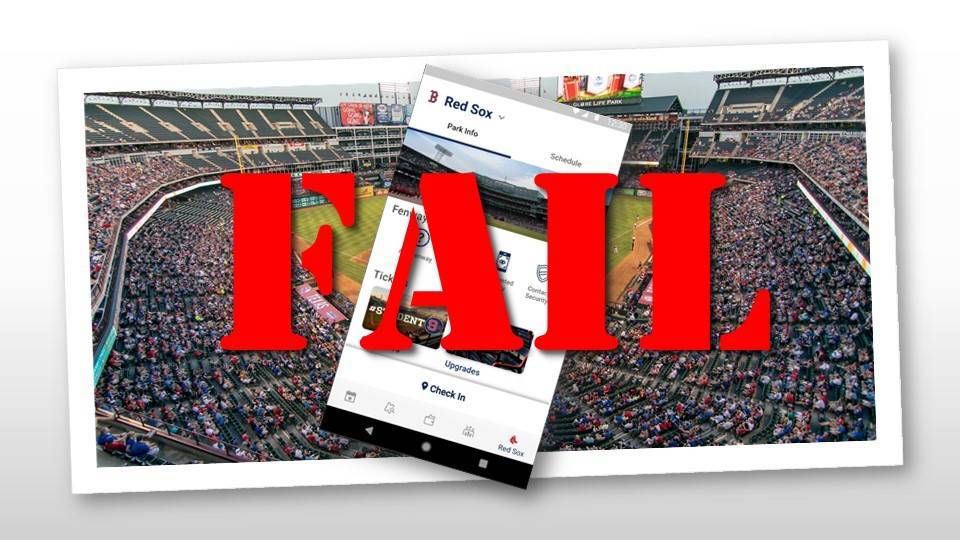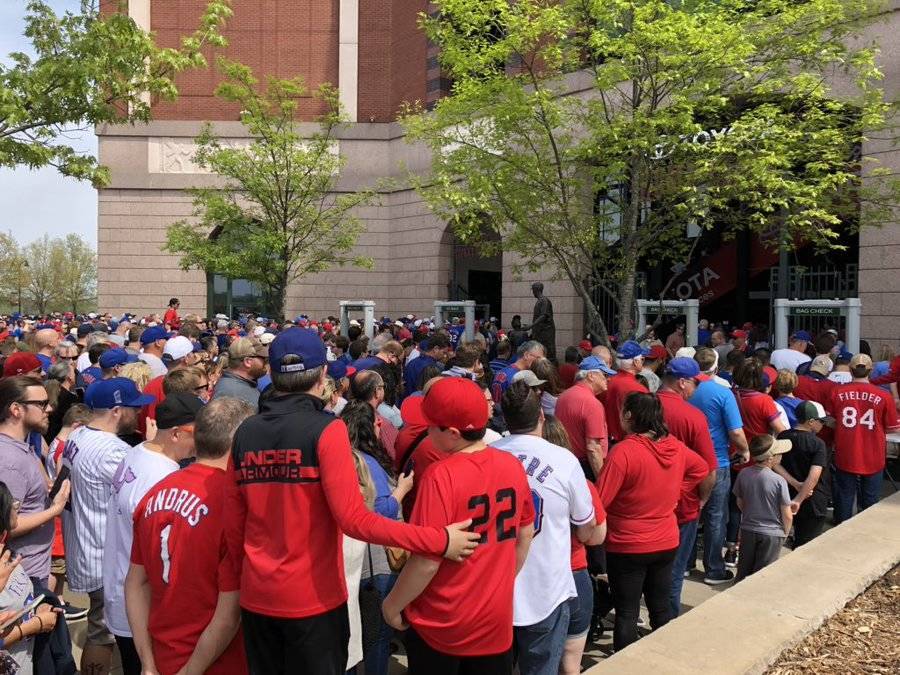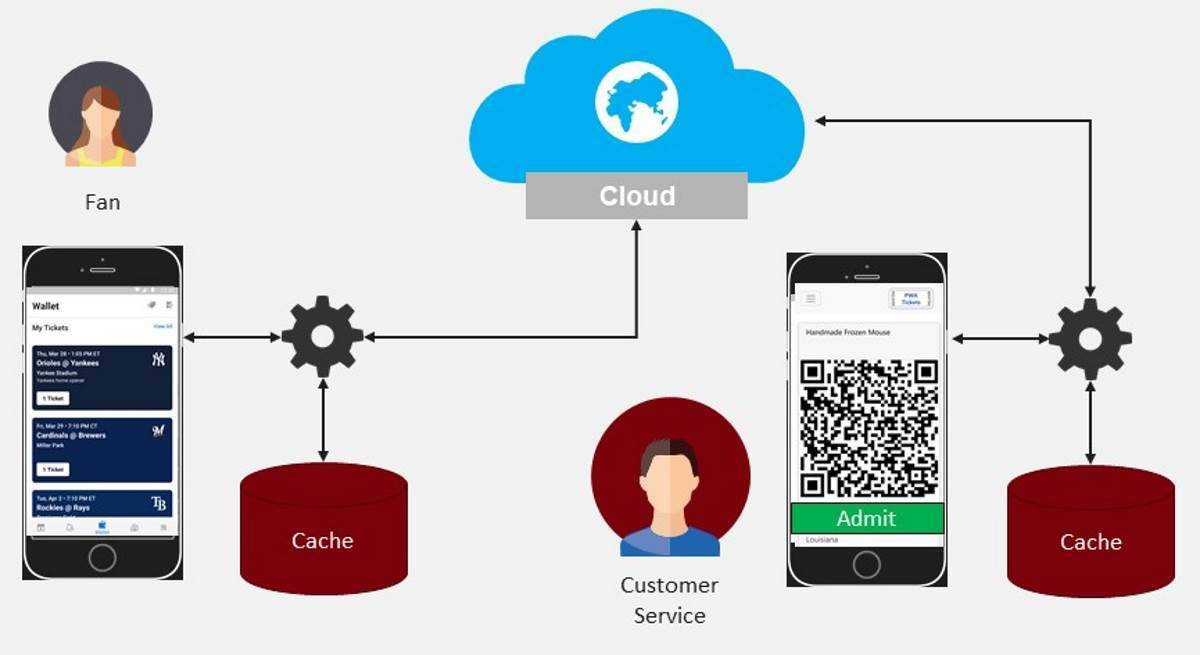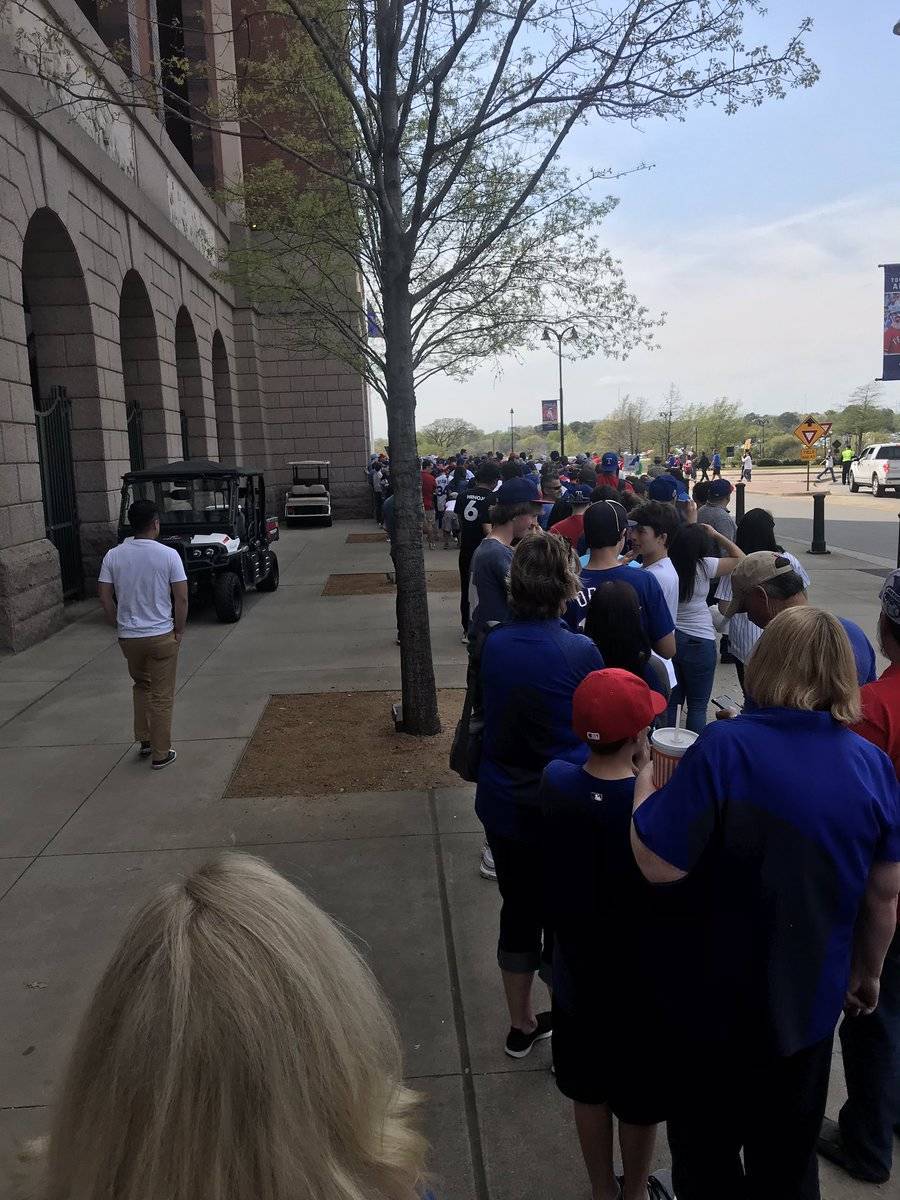Major League's Ballpark App Frustrated Fans With Failed Digital Experiences - Why A Progressive Web App Could Make Everyone Happier

Major League's opening day is supposed to be a time-honored American tradition, but in 2019 bad mobile applications kept fans from enjoying games all over the country, including the Texas Rangers and Chicago Cubs.
"It’d be cool if a billion-dollar industry could figure out how to keep this from happening."
Instead of buying 2 pound chicken fingers, hot dogs, hamburgers and lots of beer while cheering for the home team fans spent over an hour lined up to enter stadiums.
Many reported not entering stadiums till the 3rd or 4th innings. Unless you are a Dodger's fan that is unacceptable.
While opening day is the source of logistical issues for any business, when things go real bad due to modern technology it can go real bad.
And that is what happened during the 2019 major league baseball opening day games.
I am acutely aware of how events like baseball game tickets work. My dad used to work at the Texas Rangers park and finished the last two seasons working one of the stadium entrances scanning tickets.
He is a good story teller and well has shared many great stories of life at the old ballpark. Those stories even inspired one of the demonstration progressive web apps I included in my PWA development book last year.
And that is why I know a Progressive Web Application would have solved many of the issues fans experienced trying to access their game tickets.
If you are new to progressive web apps (PWA) they are modern web applications that work across browsers and platforms. They are designed to optimize mobile application experiences by leveraging modern capabilities and best practices.
PWAs can work offline thanks to local caching, take advantage of geo-location, push notifications and more.
Let's dive into the MLB fan issues and review how progressive web applications would have solved them.
What Does the MLB Ballpark App Feature?
To incentivize customers to download an app there has to be something compelling first. So lets review the features offered by the MLB Ballpark app.
Ticket Management
Team Schedule
Stadium Map & Directory
Rewards Program
Scores & Photos of Your Games
Designating Favorite Team
Social Media
Seat Upgrade Ability
Directions & Parking Info
By compelling I mean the functionality and data really needs to require an app to use. I know there is nothing in the list that could not be equally accessed via a web application. So where is the incentive?
Most of the features are just rendering data, which the web has always excelled doing. I have personally built dozens of applications that allow content customization, like the team favoriting. E-commerce is a no brainer, so ticket purchase and upgrades are doable. Maps and directions have been available for years and geo-location was added to the web over a year ago.
I even built an app similar to the stadium map & directory functionality.
There is nothing here that compels me to go through the 8 or more steps to download this app and consume several 100MB of my limited disk space to run. Especially when a 100kb or less of HTML, CSS and a little JavaScript will do.
How Bad Tech Created a Bad Fan Experience
Even though major league baseball franchises appear to be independent, they aren't. They all use the same underlying technology stack for their 'consumer' experience.
This includes ticket purchases and digital access. You can still buy tickets at the stadium box office, but most fans lean on modern digital tickets.
This year MLB policy limited tickets to just physical tickets printed on official franchise stock or within the official MLB Ballpark app.
I get the need to control ticket fraud by eliminating home printed tickets, which can be fabricated. But forcing fans to download an app is a bad idea, especially when that app does not offer anything a progressive web application could not provide.
"...also the experience of standing in a line for 45 minutes because overdramatic security measures and some pointless new technology means that fans are slowly being let into the ballpark one at a time."
"According to a source at the Phillies game, one security guard said that teams’ move to paperless tickets were to blame, as fans would get to the front of the line, attempt to use the official app that contained their tickets, and then watch helplessly as the app would fail."
I do not have any inside insight into how the MLB Ballpark app works or the back-end technology, but I have an idea based on my 25 years of professional software development experience.
I have built a sports ticket management solution in the past, so I know some of the unique requirements these systems have.

Let's establish some usage expectations so you will know what should be accounted for when designing a system.
There are 32 teams, which means no more than 16 games in a day. There are actually 15 on Thursday. The game start times were staggered through out the day, typically 3-4 starting within an hour of each other.
Major league stadiums can seat between 35-45,000 fans and opening day is typically sold out across the lead.
Tickets are typically purchased on groups, 2-6 from my experience. Which means there are about 10,000 possible 'ticket holders' that would have the digital ticket.
Let's say 20% use printed tickets, so we are down to possibly 8000 apps to scan at the stadium entrances.
Assume there are 40 possible lines and there are most likely more on average, that means each line would need to scan 200 groups of tickets.
At 15 seconds per scan (a generous amount of time) it should take about 50 minutes for fans to enter the stadium.
Wait there is more...
8000 per stadium and assume there are 4 stadiums simultaneously scanning tickets managed by the same cloud service, or 32000 requests in an hour.

So you servers need to be able to handle that many requests in an hour.
Let's be honest, this is nothing. I used to have a single web server that could handle that many requests a second and that was over a decade ago.
And yes I hosted the ticket app I mentioned earlier and it had some peaks like this at times.
Today I use a serverless infrastructure, which automatically scales as demand increases. I don't have to spin up additional servers and infrastructure, it just takes care of demand as needed.
So on paper we are good, no problems, especially for a billion dollar business, right??
How Mobile Went Wrong
Forcing fans to download an app like the MLB Ballpark app is a bad marketing move.
The reality is, adults don't download apps any longer. They haven't for years (Source: comScore Mobile Metrix June 2015 – US – Age 18+).
"Absolutely a shakedown for your personal info from MLB. You have no choice but to use it because they took away the ability to print tickets from home. This makes getting into the stadium with a family or group cumbersome, since you have to keep pulling your phone out and swiping to show the tickets. On top of that it doesn't do anything useful at the stadium. If you have food & merchandise dollars on your tickets there's no balance, and each ticket is individual, so that's more swiping" - Matthew Epstein
Forcing fans to use the 'official' ballpark app is really an attempt by MLB to increase customer engagement by having their icon on their homescreen.
Otherwise I doubt most fans would bother with the app.
Limiting access to tickets as well as food and other ballpark experience amenities through the app is just not appealing to anyone.
It not only causes friction for fans it makes them feel like you are spying on their personal information.
But back to the technology failing.
Fans did not download the app before the game.
Why?
Fans did not think they would be forced to download an app for tickets they purchased outside the app. Tickets can be purchased through various outlets, including resellers and of course MLB and team websites.
That's right, their websites.
Limiting purchases to your brand is analogous to a retailers only accepting their own branded credit card. No one does that, they accept all sorts of credit card brands and cash.
Since no one had the app, everyone had to try and download the app over cellular connections. This created a network bottleneck on an already crowded cell tower.
Anytime you go to an event like a ball game or concert with thousands of people using their mobile devices the cell towers get crowded and connectivity becomes limited.
At the same time the customer service agents scanning tickets needed access to the network to verify tickets, which if course was limited.
Do you see what happened?
The Internet was not available, they were effectively offline.
The customer service agent system may have an on-premise database or back-end system with the event's ticket information available from an internal network, if not they should.
But the customers should be able to access their ticket information and cache it locally. This could be a combination of just logging into their account and caching via a service worker or saving the QR code image locally.

I do the later every time I board a plane just to be safe. It would be nice if airlines would convert to progressive web apps, hint, hint.
This is something I detail in the last few chapters of my Progressive Web Application Development By Example book.
The last application I used in my book PWA development book is an event ticket application. Ironically the demonstration app was inspired by a conversation I had with my dad this time last year about Texas Rangers tickets and the scanning experience.
For several years he was a customer service agent at Globe Life Stadium. The last year and a half or so he worked the entrance scanning tickets.
He had lots of stories, which get my problem solving brain going.
Hence the demonstration ticket progressive web app that uses randomly generated QR codes and client side ticket caching.
In case you are wondering I almost added a QR scanning PWA, but I did not have enough 'room' in the book to cover it as well.
Reading QR and Bar codes is pretty easy to do through a web page. And of course a progressive web application is a great way to create the app.
Ticket data for an entire stadium, even if it is AT&T Stadium, across the street from the Rangers, is at capacity with over 100,000 tickets.
Service worker cache capacity means you can store enough projected ticket data on average mobile devices to scan all the tickets and use background sync functionality to record scanning activity and verify the ticket holders for entry.
Even when the network is jammed fans and customer service reps alike can manage ballpark entry without technology induced frustration.

Progressive Web Application Development
Love2Dev specializes in developing Progressive Web Applications. We have been designing and developing PWAs for years. We help businesses use the web to grow and improve their business using modern web capabilities and best practices.
Our websites are Progressive Web Apps and SEO friendly by default. We believe to compete in today's online world you must leverage the latest technologies and have a great user experience to earn great organic search rankings.
Thanks for Connecting
Thanks for Connecting
We have received your information. Please check your inbox for a confirmation. Someone will connect with you personally as soon as we can.
Sorry, Something went Wrong 😭
We appoligize, but it appears something has broken. Please try again, or maybe use our general contact form.
Talk To An Expert.
Why Progressive Web Applications are Perfect for Consumer Apps
Businesses are deciding if they need a mobile app or can a progressive web application meet their needs.
More often than not PWAs are the best solution. That's because they are cheaper to develop and deploy. They work in every browser and every operating system.
They are also available without app stores and take up a small fraction of disk space native apps require.
Progressive web applications can work offline and when the network is limited. They can also take advantage of modern functionality like geo-location, notifications and the device camera.
These features could be leveraged to create both a rich fan experience and reliable tool for major league customer service agents.
Its a shame Major League Baseball decided to go with a native app. They spent a lot of money creating the apps, only to have common mobile app problems leave thousands of their most loyal fans frustrated.
But the failure serves as a great example of why businesses should select progressive web applications to reach their customers and make them loyal fans.
Is your online experience winning you fans? If not then maybe it is time you upgraded to a progressive web application.

